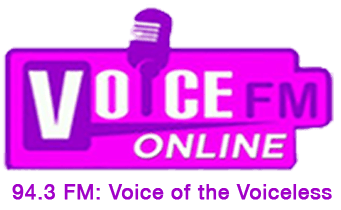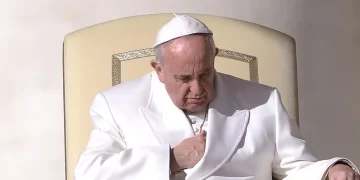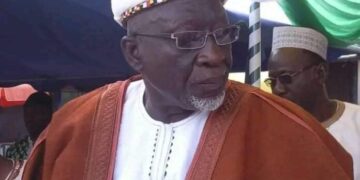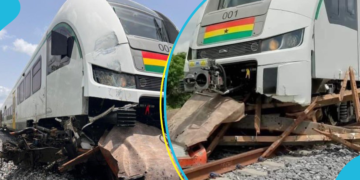 Ghana has been named among 36 other countries eligible to receive assistance under the Highly Indebted Poor Country (HIPC) initiative by the International Monetary Fund (IMF).
Ghana has been named among 36 other countries eligible to receive assistance under the Highly Indebted Poor Country (HIPC) initiative by the International Monetary Fund (IMF).
This was revealed in a statement issued by the Fund.
Ghana’s three year agreement with the IMF for $900 million was approved on April 3, 2015.
On September 1, 2015 the IMF completed its review of economic performance under the programme.
The fund has disbursed over $ 200 million under the current arrangement to Ghana.
It first released $144 million and later, $ 166 million after assessing Ghana’s performance.
Below is the IMF’s full statement
Debt Relief Under the Heavily Indebted Poor Countries (HIPC) Initiative
Debt relief key to poverty reduction
The HIPC Initiative was launched in 1996 by the IMF and World Bank, with the aim of ensuring that no poor country faces a debt burden it cannot manage. Since then, the international financial community, including multilateral organizations and governments have worked together to reduce to sustainable levels the external debt burdens of the most heavily indebted poor countries.
In 1999, a comprehensive review of the Initiative allowed the Fund to provide faster, deeper, and broader debt relief and strengthened the links between debt relief, poverty reduction, and social policies.
In 2005, to help accelerate progress toward the United Nations Millennium Development Goals (MDGs), the HIPC Initiative was supplemented by theMultilateral Debt Relief Initiative (MDRI). The MDRI allows for 100 percent relief on eligible debts by three multilateral institutions—the IMF, the World Bank, and the African Development Fund (AfDF)—for countries completing the HIPC Initiative process. In 2007, the Inter-American Development Bank (IaDB) also decided to provide additional (“beyond HIPC”) debt relief to the five HIPCs in the Western Hemisphere.
Two step process
Countries must meet certain criteria, commit to poverty reduction through policy changes and demonstrate a good track-record over time. The Fund and Bank provide interim debt relief in the initial stage, and when a country meets its commitments, full debt-relief is provided.
First step: decision point. To be considered for HIPC Initiative assistance, a country must fulfill the following four conditions:
- Be eligible to borrow from the World Bank’s International Development Agency, which provides interest-free loans and grants to the world’s poorest countries, and from the IMF’s Poverty Reduction and Growth Trust, which provides loans to low-income countries at subsidized rates;
- Face an unsustainable debt burden that cannot be addressed through traditional debt relief mechanisms;
- Have established a track record of reform and sound policies through IMF-and World Bank–supported programs; and
- Have developed a Poverty Reduction Strategy Paper (PRSP) through a broad-based participatory process in the country.
Once a country has met or made sufficient progress in meeting these four criteria, the Executive Boards of the IMF and World Bank formally decide on its eligibility for debt relief, and the international community commits to reducing debt to a level that is considered sustainable. This first stage under the HIPC Initiative is referred to as the decision point. Once a country reaches its decision point, it may immediately begin receiving interim relief on its debt service falling due.
Second step: completion point. In order to receive full and irrevocable reduction in debt available under the HIPC Initiative, a country must:
- Establish a further track record of good performance under programs supported by loans from the IMF and the World Bank;
- Implement satisfactorily key reforms agreed at the decision point; and
- Adopt and implement its PRSP for at least one year.
Once a country has met these criteria, it can reach its completion point, which allows it to receive the full debt relief committed at the decision point.
Countries receiving debt relief. Of the 39 countries eligible or potentially eligible for HIPC Initiative assistance, 36 are receiving full debt relief from the IMF and other creditors after reaching their completion points. Three countries, which have been identified as potentially eligible for HIPC Initiative assistance, have not yet reached their decision points.
Debt relief frees up resources for social spending
Debt relief is one part of a much larger effort, which also includes aid flows, to address the development needs of low-income countries and make sure that debt sustainability is maintained over time. For debt reduction to have a tangible impact on poverty, the additional money needs to be spent on programs that benefit the poor.
Boosting social spending. Before the HIPC Initiative, eligible countries were, on average, spending slightly more on debt service than on health and education combined. Now, they have increased markedly their expenditures on health, education, and other social services. On average, such spending is about five times the amount of debt-service payments.
Reducing debt service. For the 36 countries receiving debt relief, debt service paid has declined by about 1.8 percentage points of GDP between 2001 and 2013.
Improving public debt management. Debt relief has markedly improved the debt position of post–completion point countries, bringing their debt indicators down below those of other HIPCs or non-HIPCs. However, many remain vulnerable to shocks, particularly those affecting exports, as seen during the global economic crisis. To reduce their debt vulnerabilities decisively, countries need to pursue cautious borrowing policies and strengthen their public debt management.
IMF debt relief complemented by other sources
About 44 percent of the funding comes from the IMF and other multilateral institutions, and the remaining amount comes from bilateral creditors.
The total cost of providing assistance to the 39 countries that have been found eligible or potentially eligible for debt relief under the enhanced HIPC Initiative is estimated to be about $75 billion in end-2013 net present value terms.
The IMF’s share of the cost is financed by bilateral contributions and resources from the Fund itself, mainly investment income on the proceeds from off-market goldsales in 1999. These funds were deposited to the IMF’s PRG-HIPC Trust.
Resources available in the trust are currently insufficient to finance the cost of debt relief to all countries that meet the initial conditions for debt relief and reach the decision point. The original financing plan did not include the cost of debt relief to Sudan and Somalia, as well as to other countries that entered the Initiative after 2006. Should these countries progress to the decision point, there would be an urgent need to mobilize resources.
Challenges remain
The pre-decision point countries face common challenges, including preserving peace and stability, and improving governance and the delivery of basic services. Addressing these challenges will require continued efforts from these countries to strengthen policies and institutions, and support from the international community.
Another challenge is to ensure that eligible countries get full debt relief from all their creditors. Although the largest creditors (the World Bank, the African Development Bank, the IMF, the Inter-American Development Bank, and all Paris Club creditors) have provided their full share of debt relief under the HIPC Initiative, and even beyond, others are lagging behind. Smaller multilateral institutions, non-Paris Club official bilateral creditors, and commercial creditors, which together account for about 26 percent of total HIPC Initiative costs, have only delivered a small share of their expected relief so far.
Non–Paris Club bilateral creditors as a whole have delivered around 47 percent of their share of HIPC Initiative debt relief, but about one third of these creditors have not delivered any relief at all. While there has been some increase in the delivery over the past few years, the rate of delivery remains disappointingly low.
The delivery of debt relief by commercial creditors has increased markedly in recent years through a few large operations supported by IDA’s Debt Reduction Facility buyback operations. Some commercial creditors have initiated litigations against HIPCs, raising significant legal challenges to burden sharing among all creditors, including the multilateral institutions. The number of litigation cases against HIPCs has been declining in recent years but flattened over the past few years.
Given the voluntary nature of creditor participation in the HIPC Initiative, the IMF and the World Bank will continue to use moral suasion to encourage creditors to participate in the Initiative and to deliver fully their share of HIPC Initiative debt relief.
The IMF and World Bank will also continue to improve their ability to monitor the delivery of HIPC Initiative debt relief. The IMF will continue to address issues related to participation in the HIPC Initiative during its regular consultations and other missions to creditor countries.
List of Countries That Have Qualified for, are Eligible or Potentially Eligible and May Wish to Receive HIPC Initiative Assistance (as of September 2015)
| Post-Completion-Point Countries (36) | ||
| Afghanistan | Ethiopia | Mauritania |
| Benin | The Gambia | Mozambique |
| Bolivia | Ghana | Nicaragua |
| Burkina Faso | Guinea | Niger |
| Burundi | Guinea-Bissau | Rwanda |
| Cameroon | Guyana | São Tomé & Príncipe |
| Central African Republic | Haiti | Senegal |
| Chad | Honduras | Sierra Leone |
| Comoros | Liberia | Tanzania |
| Republic of Congo | Madagascar | Togo |
| Democratic Republic of Congo | Malawi | Uganda |
| Côte d’Ivoire | Mali | Zambia |
|
Pre-Decision-Point Countries (3) |
||
| Eritrea | Somalia | Sudan |
































